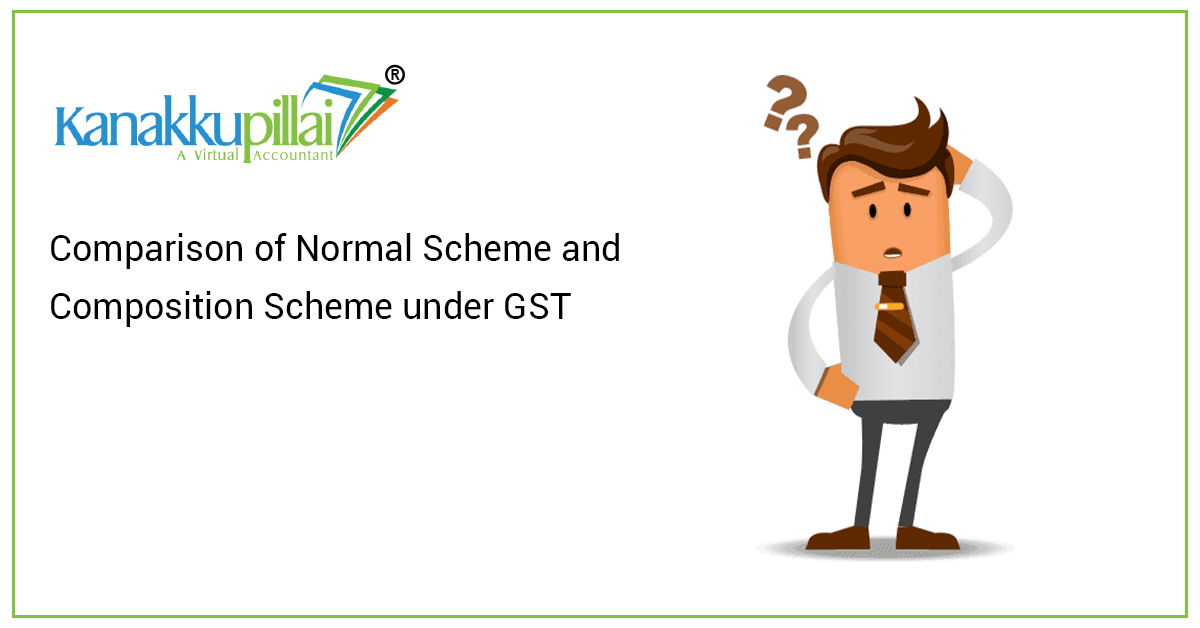GST was introduced during 2017, and since then the business entities are expected to comply with the same as per the GST Act. There is a Regular GST Scheme and Composite GST Scheme which is the major point of this article.
Regular GST Scheme
In India, when a business entity earns a turnover of INR 20 lakhs or INR 40 lakhs for a supplier of services/goods, then the person should take mandatory registration under GST. This limit is set at INR 10 Lakhs/20Laks in case of certain North Eastern and hilly states flagging the same as Special Category States, which includes:
- Arunachal Pradesh,
- Manipur,
- Meghalaya,
- Mizoram,
- Nagaland,
- Sikkim,
- Tripura, and
- Uttar
The taxpayers who have chosen to pay GST under the Regular GST Scheme, then they should file returns on a monthly basis and they can also avail the benefits of ITC or Input Tax credit of the GST which was paid on the purchase of goods or services.
Composite GST Scheme
This scheme was created to benefit small businesses. However, this can only be opted for by those business entities or owners who are dealing with the supply of goods and whose turnover does not exceed INR 1.5 Crores. This is INR 75 Lakhs in the case of Special Category States. Here the supplier will be charged with:
- 1% of turnover by traders
- 2% of turnover by manufacturers;
- 5% of turnover for restaurants;
- 6% of turnover for service providers.
One point to be stressed or noted over here is that, the taxpayer should pay the GST out of the earnings and cannot collect the same from the buyer or consumer due to which they cannot issue a tax invoice. As the compliance level is minimum the taxpayers are not required to maintain books of accounts as per the GST Act.
Difference between Regular GST Scheme and Composite GST Scheme
| PARTICULARS | REGULAR GST SCHEME | COMPOSITE GST SCHEME |
| Meaning | This is the normal scheme of GST, where the output tax will be paid and the ITC (Input Tax Credit) can be availed. | This is the scheme for small taxpayers, but here, the tax cannot be collected from consumers as the GST shall be paid as a fixed percentage of the taxpayer’s turnover. |
| Filing of Returns | The returns to be filed by the taxpayer under the GST Act include the following: – GSTR 9 or GSTR 9C, which is Annual Return, – GSTR 3B, which is a monthly return, – GSTR 1, which is filed on a monthly or quarterly basis. |
The following returns shall be filed by the taxpayer: – Form GSTR 4, which should be filed on an annual basis, – Form GSTR 9A, which is the annual return, – Form CMP-08, which is a Statement of Tax paid, should be filed on a quarterly basis. |
| Supply | Under the Regular GST Scheme, the supplier can make both intra and inter-supply. | However, under the Composite GST Scheme, the inter-state supply cannot be done by the supplier. |
| Tax Collection | Here, tax shall be collected at the rates prescribed. | Under this scheme, GST cannot be collected by the supplier from the consumers. |
| Supply of Services | INR 20 Lakhs is the prescribed limit in case of a supply of services for opting for the Regular GST Scheme, and the GST Rate would depend on the particulars of the service being provided by the taxpayer to the consumer. | INR 50 Lakhs is the prescribed threshold limit with respect to services and the tax rate applicable shall be 6% on the turnover. |
| Ineligibility | There is no exception or ineligibility specified. | The following persons cannot opt for a composite scheme: – Persons who are having inter-state supplies, – Supplier of non-taxable goods, – Supplier of goods through an e-commerce portal, – Producer of ice cream, tobacco or pan masala, – An entity whose turnover has crossed the prescribed threshold limits, – A business entity who is having another branch or segment under the same PAN that has opted for the Regular GST Scheme. |
| Conditions coming under the Scheme | Once a taxable person is registered under the Regular GST Scheme as per the GST Act, then no other business which is coming under the same PAN of the business can opt for the Composition Scheme under GST, as the same is not allowed by the GST Act. | Certain conditions under this scheme include: – The taxpayer cannot claim ITC under this scheme. – The exempted goods under the GST Act cannot be supplied by such a person. – The dealer or person who has opted this scheme can supply services to an extent of 10% of the turnover or Rs. 5 lakhs, whichever is higher. – A tax payer who has opted for composition scheme should specify the same along with the statement that he is not permitted to collect taxes on any bill of supply in bills, notices and the signboards which are kept at the place of their business. – While paying GST under the Reverse Charge Mechanism, he should pay the same at normal tax rates. – If the taxpayer has different segments or entities under the same PAN, then they should opt for this scheme collectively or opt out of the scheme also collectively. |
| Issues | A tax invoice shall be issued as the taxpayer is collecting the GST from the consumers on the supply made to the consumer. | A Bill of Supply shall be issued to the consumer, as the taxpayer cannot collect the GST from the consumer under this scheme. |
| Payment of GST | The GST shall be payable by the tax payer by adjusting the ITC available to the tax payer along with the GST payable under Reverse Charge Mechanism (If Any). | Here, the GST shall be payable by the taxpayer out of his pockets or earnings as the same cannot be collected from the consumer. So, the tax payable shall include the GST on the supply made along with the GST payable as per the Reverse Charge Mechanism. |
| Restriction dealing with SEZ | Under this scheme, no restriction is implied with regard to export or supply to SEZ and SEZ Developers. | However, under the Composite GST Scheme, a person cannot make any supplies to SEZ or SEZ Developers. |
| Condition to Opt-Out | A person can opt out of the GST Scheme at any point in time when such a person’s turnover is below the specified threshold limit. | Under this scheme, a person can opt-out if the turnover goes above INR 1.5 Crore or INR 75 Lakhs. But they can also opt out for opting regular GST Scheme in the start of a financial year. |
Hence, we can conclude that a business person should make a proper decision only after considering the scheme and all the available options such that an apt and advantageous decision will be taken.
Related Services





